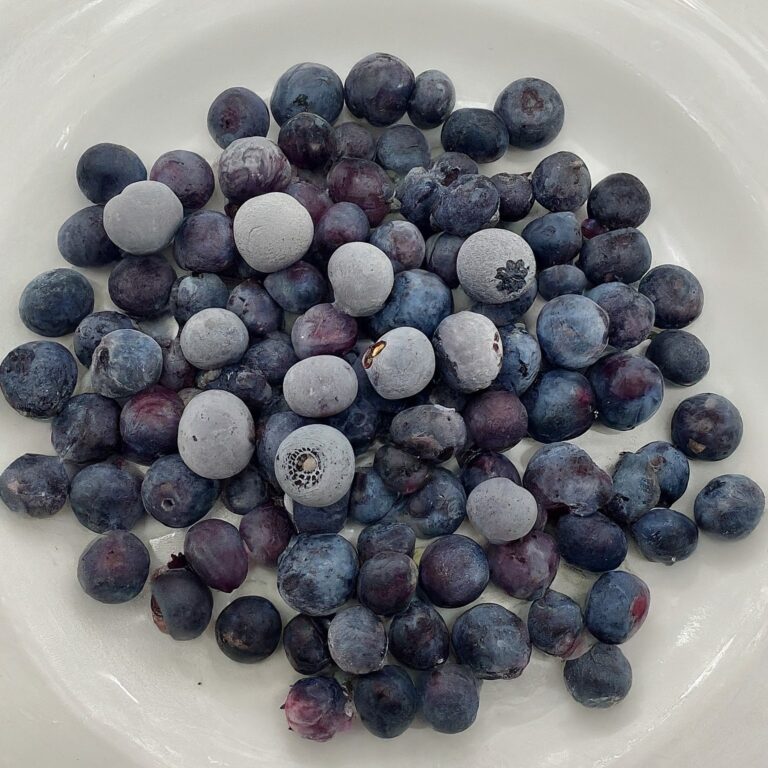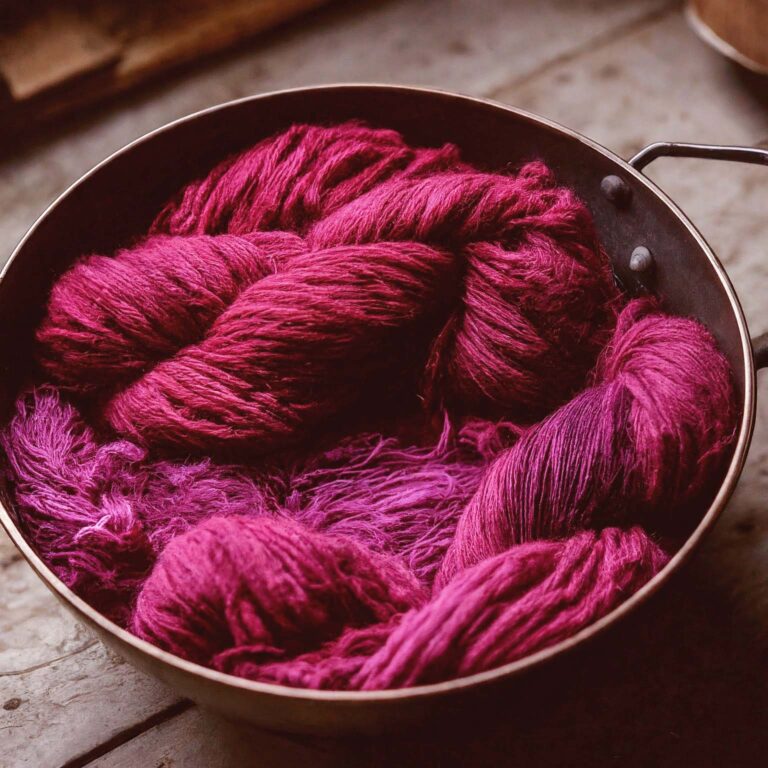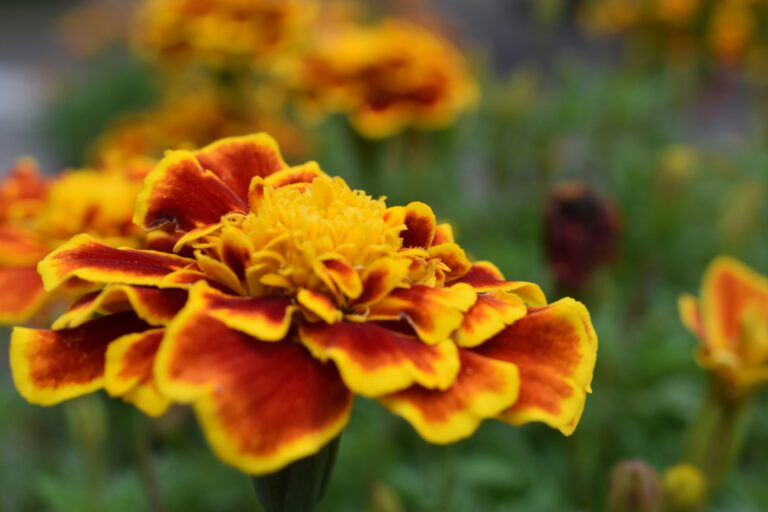Dyeing with Cochineal: If at first you don’t succeed.

The start of my cochineal journey was not that great but now this is a permanent fixture in my dyeing palette.
In this post I am actually going to be dyeing with an extract that was bought from a natural dye supplier rather than from something in my immediate environment. There are a few colours which unfortunately are a little hard to get from my local area so it was time to start looking at bought natural dyes to help expand the colour palette.
Cochineal dyeing has been around for over a thousand years and was famously used by the Aztecs to produce crimson colours. This is another dye however that comes from a beetle. You may not want to use it if you are vegan.
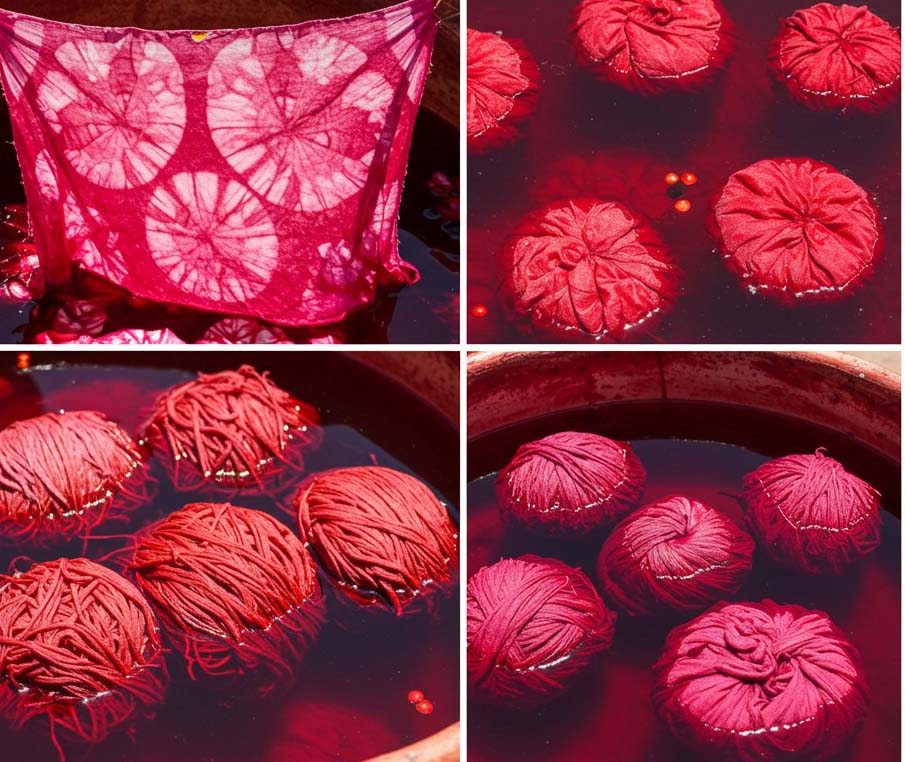
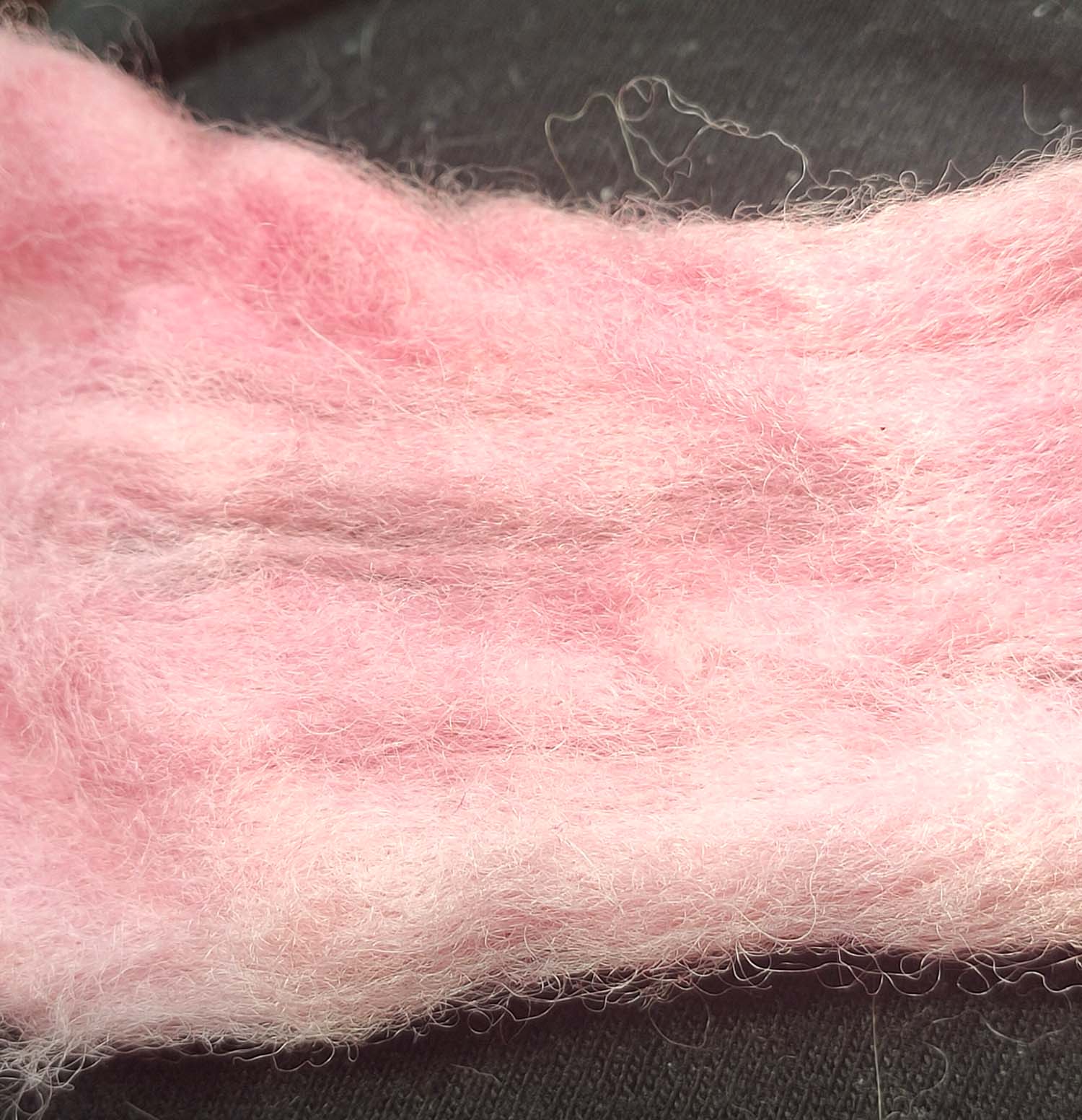
Dyeing with Cochineal
My first attempts at dyeing with cochineal were not the greatest. So in the interests of sharing the failures as well as the successes, I thought I would give you a quick run down of what did and didn’t work for me.
Solar dyeing with cochineal.
I first started with my usual solar dyeing technique on merino roving. I did get a pink but as you can see in the photo it was very wishy washy……some parts of the roving had very little colour at all. This was not going to work at all.
Heat Dyeing with Cochineal
I then tried my usual heat dyeing process, again on merino roving. I placed the powder in hot water and placed it on heat for an hour. After letting in cool I place the wet premordanted roving into the dye bath and left it on low heat for an hour. Again not that great. The colour was a little darker, but still wishy washy. And really, still pink. I had used 5% of WOF which is more than the recommended. Where is this deep dark crimson I had read about?
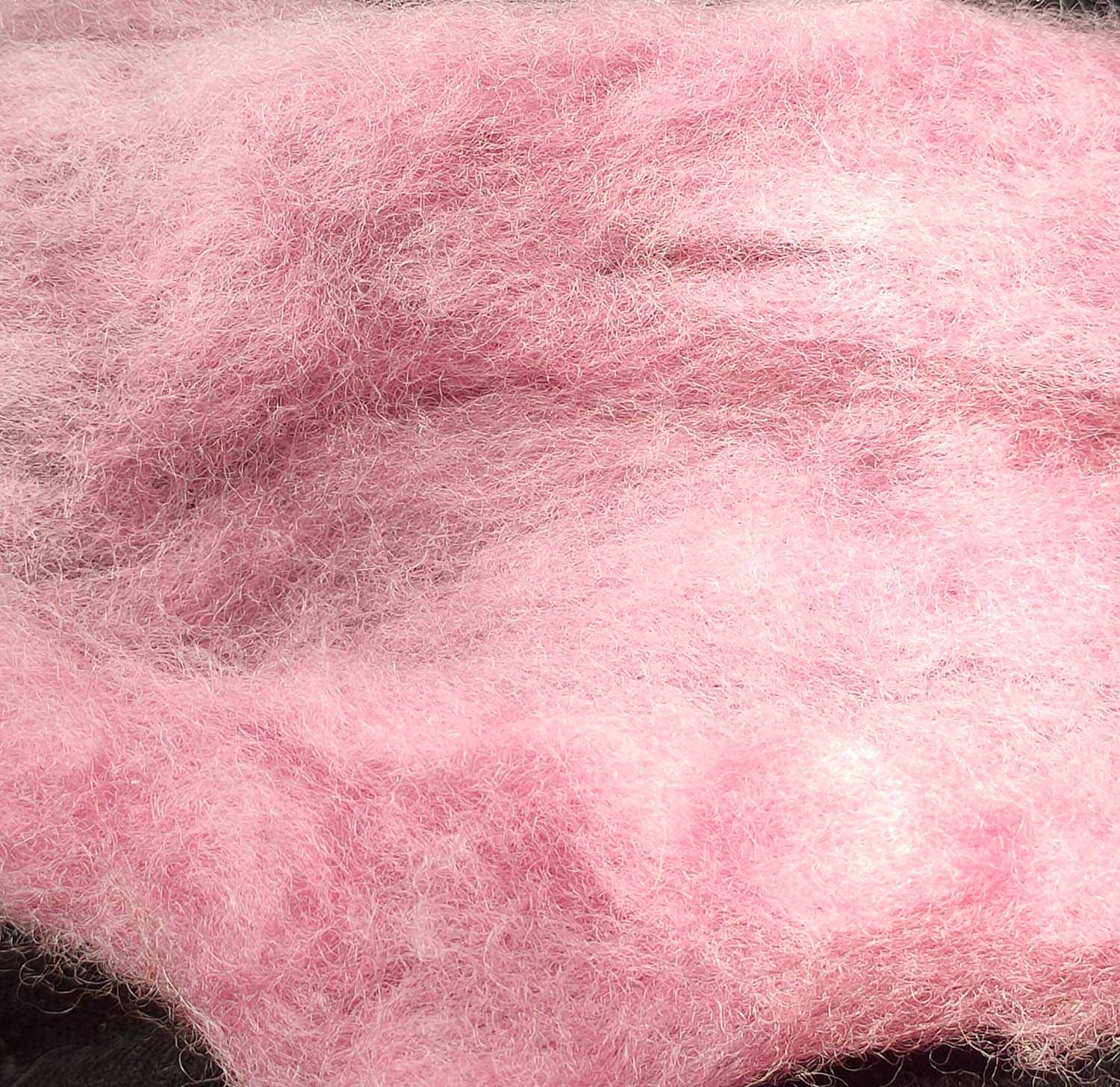
Final Dyeing with Cochineal
So I researched, and researched to try and find an answer. What was I doing wrong…it didn’t make sense. So I decided to try again with a few differences that hopefully would help. The first main difference was material. I decided to try and dye 2ply merino wool thread rather than roving. I knew that oxygen can sometimes have an effect on dyeing, especially with vat dyes like indigo. Maybe roving was just too airy and not concentrated enough??
Cochineal likes soft water. We are supposed to have soft water in our taps where I live, but I knew there had been a few issues with the water lately. Even with natural water I figured things were a little different this year. I had begun my usual coreopsis picking for the season. They grow like a wild flower up and down the mountain each spring. When I used the flowers this year to dye however, they were producing a more orange colour. This suggested a more alkaline environment this year compared to last. Then I was getting yellow dye out of the same yellow flowers. It actually worked quite well for me as I love the orange colour coreopsis produces when you add washing soda. So for them to be on an orange turn was not a problem. Due to all these indictors I decided to try distilled water for my cochineal dyeing.
I had also found a recipe that added the alum into the dye bath rather than mordanting before hand. I decided to give this ago. The problem now is that I cannot find the original author of the idea, so I am not able to give them the credit they so richly deserve. Please, if anyone knows of another blog showing this idea please leave it in the comments below.
Final Recipe
- Place 3% cochineal powder in a saucepan of distilled water.
- Boil for 30min
- add 10% alum and 5% cream of tartar
- Heat and leave until your dye bath is cool to touch
- Add your prewashed and wet yarn
- Leave on low heat for 30 to 40 min making sure you do not let the dyebath exceed 80 degrees Celsius.
- Leave to cool and then rinse gently .
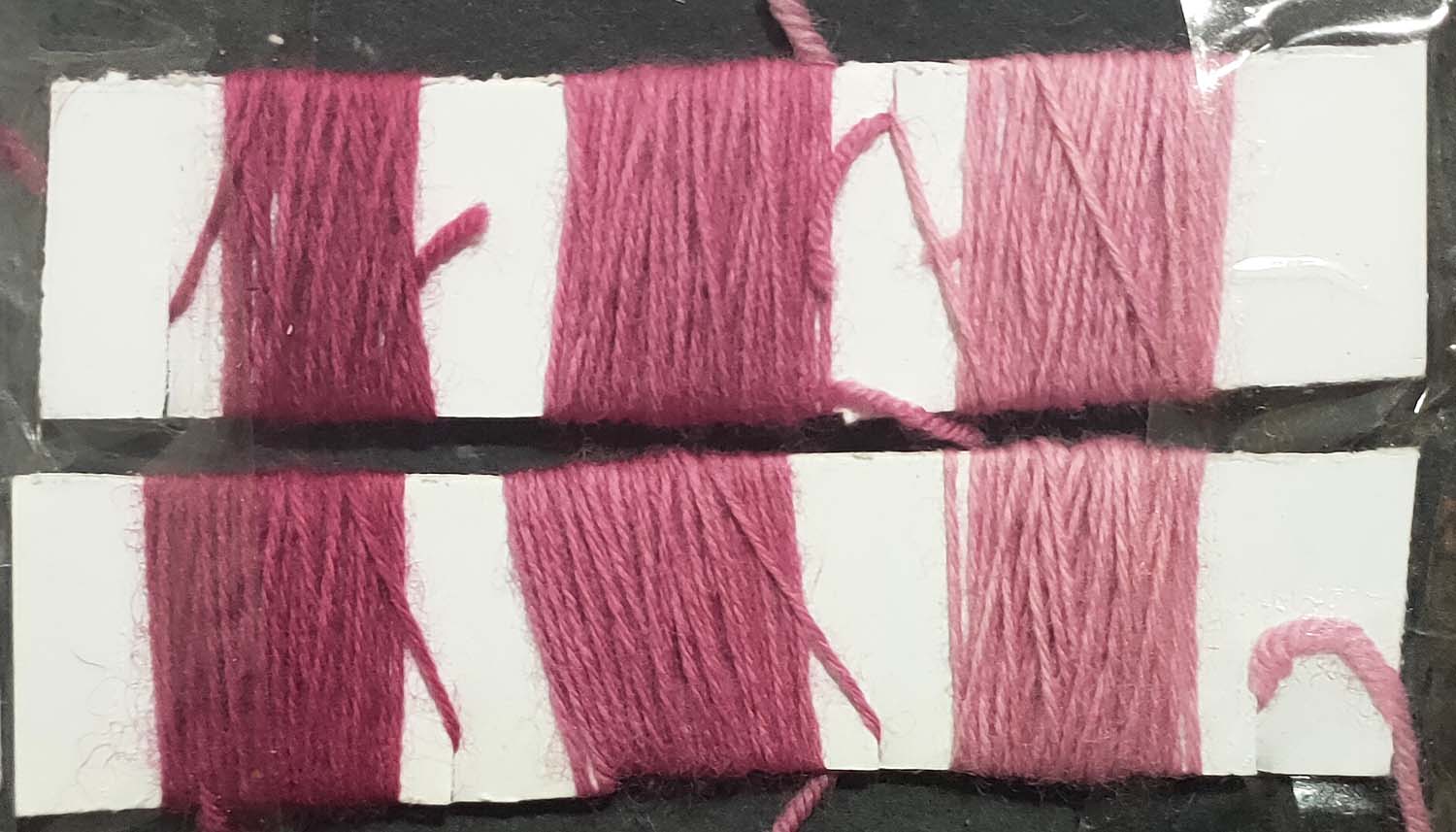
As you can see in the picture, I not only got a much darker and richer even colour, I was able to do 2 more exhausts from the bath. The second lot of threads is after 4 weeks in the hot aussie sun. No fading at all!!!!

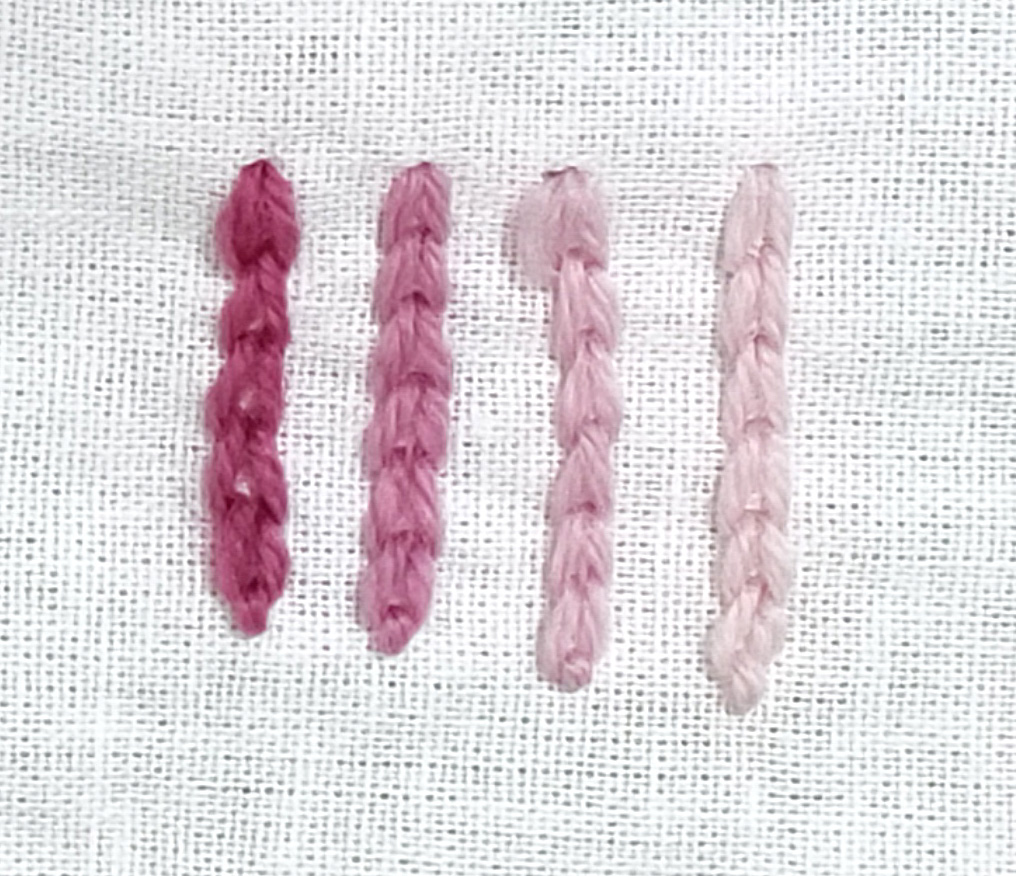
Update 3/2/2025
I have since done more dyeing with cochineal and thought I would show you what was achieved.
These pictures are of 2ply merino wool that was dyed in the same manner as above. I completed a number of exhausts with the same dye bath to get a great range of shades.
The second picture is after the embroidered thread has been washed and dried. They were gently hand washed with a ph neutral soap in warm water. It was great to see there was no running of colour.
Safety Note
Always ensure when dyeing of any nature, to keep all saucepans and utensils used in the process, separate from your general cooking supplies. You do not want to cook with anything that has been used to mordant or naturally dye your fibres. You should also wear gloves and a mask while handling your chemicals.
Join us on Instagram www.instagram.com/DyetoCraft
Etsy Shop Now open
If you like the idea of using organic naturally dyed threads in your craft but just don’t have the time, come and have a look at our Etsy Shop where you will find an array of beautiful colours provided by nature.


